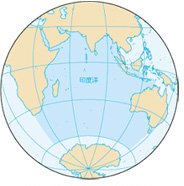For ocean resource exploitation
Worldwide energy demand including food and water resource are dramatically increasing with exponential world population growth and rising of developing countries. Resource rich countries are nationalizing resource industries and tightening regulations against foreign capital, which leads major foreign resouce companies to develop ocean bed resources like gas fields or oil fields. In this development we need staff security, damage avoidance of expensive vessels or equipments, and persuit of economic efficiency. As the only private-owned corporation in Asia that can offer advanced forecast in deep ocean, we are now working together with western resouce development project.

The world oceans hold large amount of Earth's natural resources. In the Indian Ocean, recent offshore surveys discovered some embedded points of gas hydrates, which have great potentials for the supply of natural gas to the society. However, the off-shore operations to explore those resources are often affected by variable oceanic conditions including strong ocean currents, waves, and tides. Therefore we have developed a high resolution Indian Ocean model named as the Forecast Indian Ocean (FIO) for providing detail and accurate ocean information to the user community. Here, we show the example of the model results for evaluating FIO's performance for its possible utility in the drilling operations for the gas hydrates in the Indian Ocean . From the following figures (Fig.2) we find that FIO simulated currents in those tropical Indian Ocean regions have characteristic features of monsoon currents in response to varying monsoon winds.
 |
 |
The FIO ocean currents are validated using available observations. For example following pictures (Fig.3) shows the validation of FIO currents with observations taken from a JAMSTEC buoy (TRITON) moored in the eastern Indian Ocean. Comparison of those plots demonstrates that the FIO has realistically captured ocean current variations with seasonal and weekly time scales.
 |
In one of our recent operations, our valued client from the Woodside Energy said that our current forecasts were too good to be true and they will not hesitate to take operational decisions based on our forecasts.






